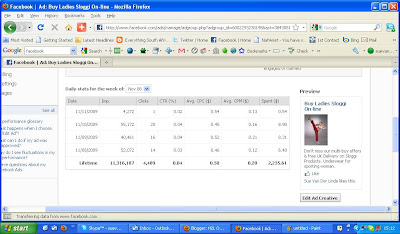Why does your business need a professional logo?
There are a lot of things that contribute towards the success of your business. Having a good quality product or the cheapest price doesn't necessarily ensure your success. To build a long term impression on your customers, it is vital that you have a proper marketing strategy and something unique about your company.
At H2L we believe it is our job to make sure our clients realize the importance of having a custom designed logo.
A professional logo design goes a long way to establish the identity and exude the attitude of the company. Now, when we say 'professional logo design", we must understand that it is not a child's play, its a specialist job and better if it is assigned to a professional logo designer.
A professionally designed custom logo can be very powerful in representing the company profile, the nature of job they do and the attitude of the company. It helps to build the identity of the company and distinguishes your service from your competitors in the industry.
A logo, if done properly can leave a long and deep impression on your customers mind. They go a long way in depicting the image of your business. You can well understand, how powerful a
logo can be if you think about the golden M of McDonalds—the moment you see that, you know its’ them. Just think about the Swoosh of Nike, do you even take a moment to think, to whom does that logo belong? That shows how powerful impact a logo can create in the mind of your customers. Wouldn’t you like your company to have an equally powerful logo?
What makes a good logo? A good logo is distinctive, appropriate, practical, graphic, simple in form and conveys an intended message.
There are five principles that you should follow to ensure that this is so…
An effective logo is (in no particular order):
Simple
Memorable
Timeless
Versatile
Appropriate
Top 50 Brands of the world
Coca-Cola, Microsoft, IBM, GE, Intel, Nokia, Walt Disney, McDonald’s, Toyota, Marlboro, Mercedes-Benz, Citi, Hewlett-Packard, American Express, Gillette, BMW, Cisco, Louis Vuitton, Honda, Samsung, Dell, Ford, Pepsi, Nescafé, Merrill Lynch, Budweiser, Oracle, Sony, HSBC, Nike, Pfizer, UPS, Morgan Stanley, JPMorgan, Canon, SAP, Goldman Sachs, Google, Kellogg’s, Gap, Apple, Ikea, Novartis, UBS, Siemens, Harley-Davidson, Heinz, MTV, Gucci and Nintendo.
Simple logos are often easily recognized, incredibly memorable and the most effective in conveying the requirements of the client.
Following closely behind the principle of simplicity, is that of memorability. An effective logo design should be memorable and this is achieved by having a simple, yet, appropriate logo.
Surprising to many, the subject matter of a logo is of relatively little importance, and even appropriateness of content does not always play a significant role.
This does not imply that appropriateness is undesirable. It merely indicates that a one-to-one relationship between a symbol and what it symbolized is very often impossible to achieve and, under certain conditions, objectionable. Ultimately, the only mandate in the design of logos, it seems, is that they be distinctive, memorable, and clear.
An effective logo should be timeless - that is, it will stand the test of time. Will the logo still be effective in 10, 20, 50 years?
Leave trends to the fashion industry - Trends come and go, and when you’re talking about changing a pair of jeans, or buying a new dress, that’s fine, but where your brand identity is concerned, longevity is key. Don’t follow the pack. Stand out.
Probably the best example of a timeless logo is the Coca-Cola logoCoca Cola logo has barely changed since 1885? That is timeless design.
Make it versatile
An effective logo should be able to work across a variety of mediums and applications. For this reason a logo should be designed in vector format, to ensure that it can be scaled to any size. The logo should be able to work both in horizontal and vertical formats.
Ask yourself; is a logo still effective if:
Printed in one colour?
Printed on the something the size of a postage stamp?
Printed on something as large as a billboard?
Printed in reverse (ie. light logo on dark background)
When H2L is creating your logo, we begin designing in black and white only. This allows you to focus on the concept and shape, rather than the subjective nature of colour. One must also remember printing costs - the more colors used, the more expensive it will be for the business over the long term.
Is the logo appropriate?
How you position the logo should be appropriate for its intended purpose. For example, if you are designing a logo for children’s toys store, it would be appropriate to use a childish font & colour scheme. This would not be so appropriate for a law firm.
It is also important to state that that a logo doesn’t need to show what a business sells or offers as a service. ie. Car logos don’t need to show cars, computer logos don’t need to show computers. The Harley Davidson logo isn’t a motorcycle, nor is the Nokia logo a mobile phone. A logo is purely for identification.



